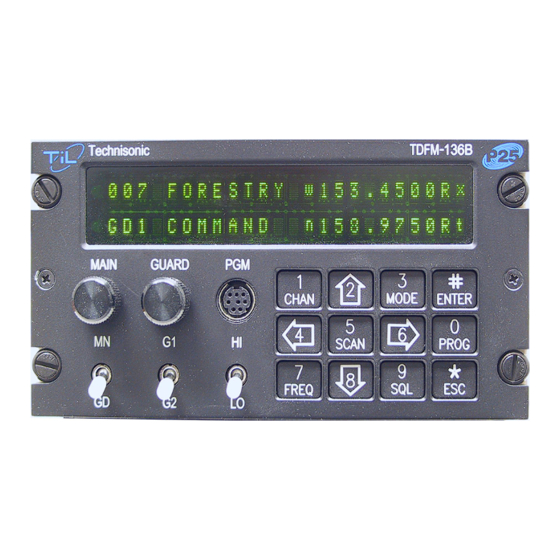
TIL TDFM-136B Manuals
Manuals and User Guides for TIL TDFM-136B. We have 3 TIL TDFM-136B manuals available for free PDF download: Operating Instructions Manual, Installation Instructions Manual, Quick Reference Manual
TIL TDFM-136B Operating Instructions Manual (75 pages)
VHF/FM DIGITAL AIRBORNE TRANSCEIVER
Brand: TIL
|
Category: Transceiver
|
Size: 1 MB
Table of Contents
Advertisement
TIL TDFM-136B Installation Instructions Manual (31 pages)
VHF/FM DIGITAL AIRBORNE TRANSCEIVER
Brand: TIL
|
Category: Transceiver
|
Size: 1 MB
Table of Contents
TIL TDFM-136B Quick Reference Manual (2 pages)
Brand: TIL
|
Category: Transceiver
|
Size: 0 MB
Table of Contents
Advertisement
Advertisement


